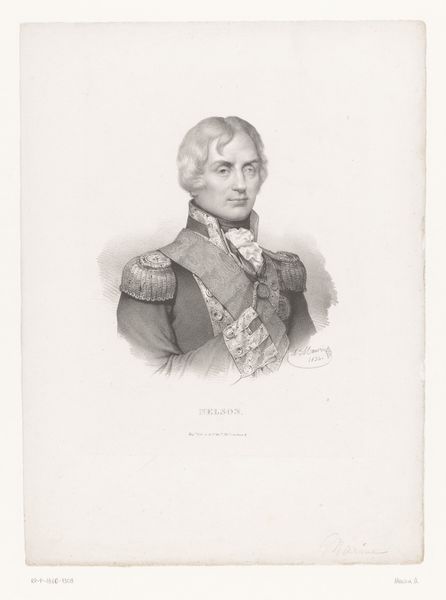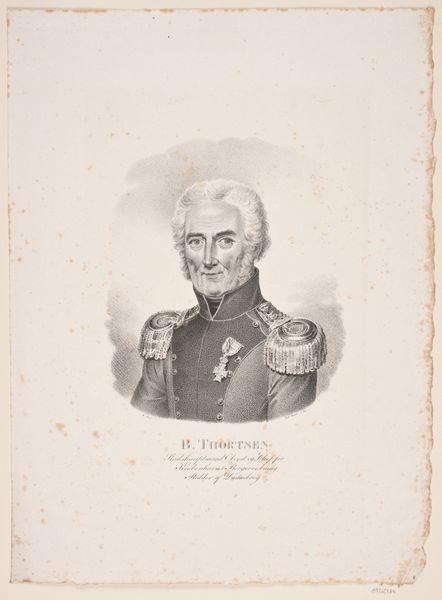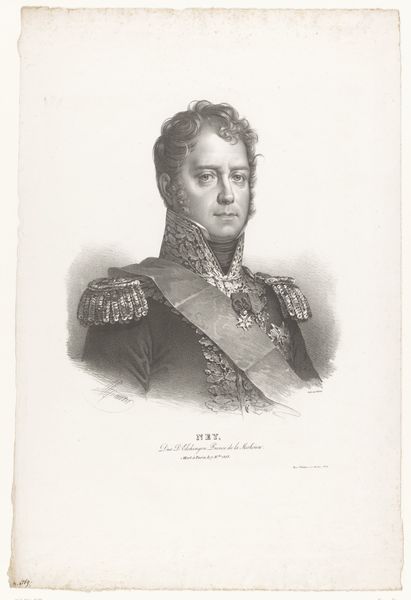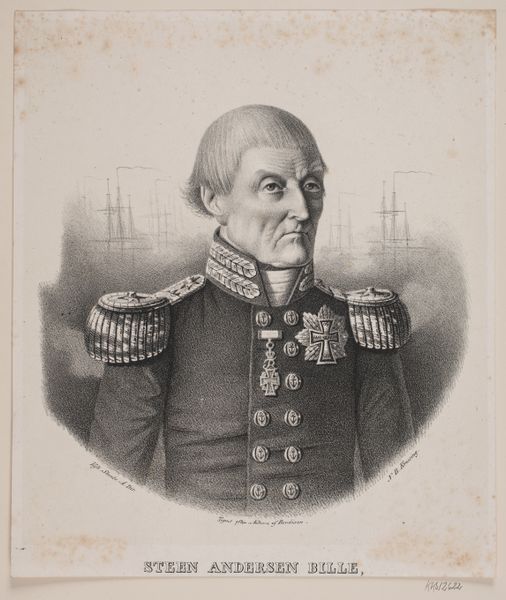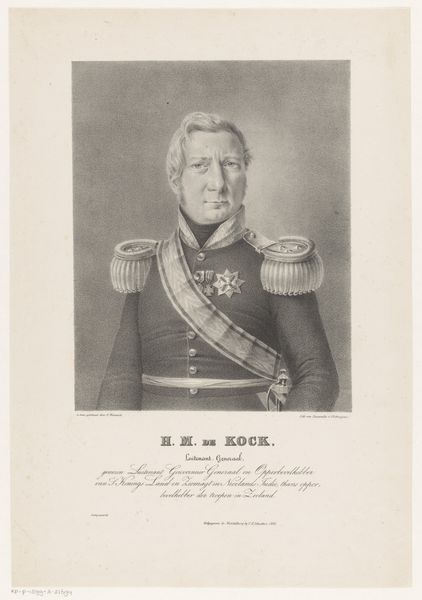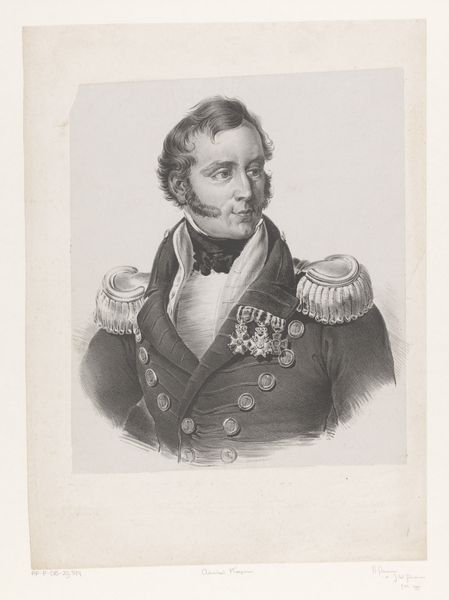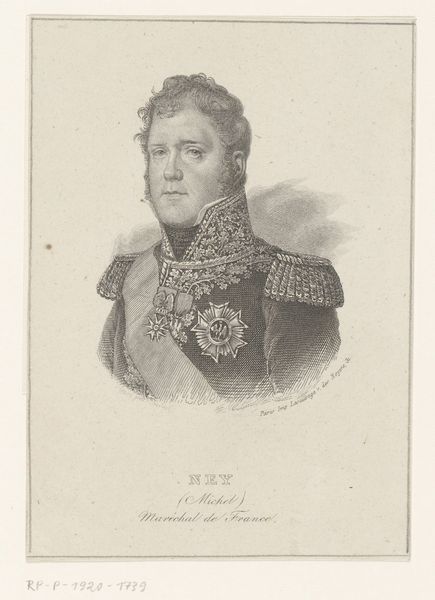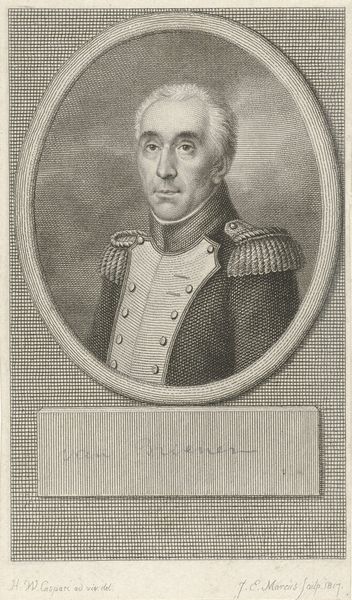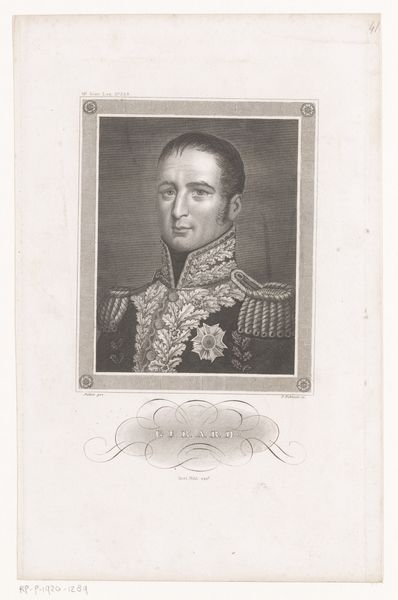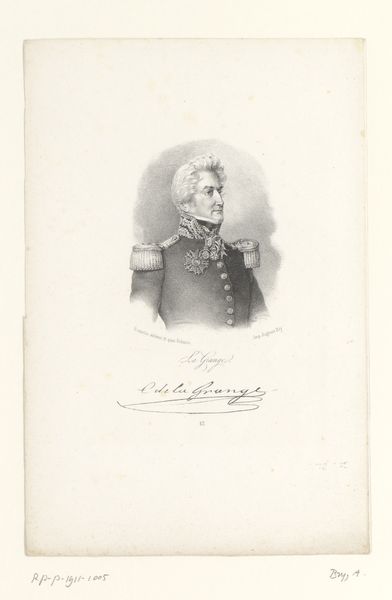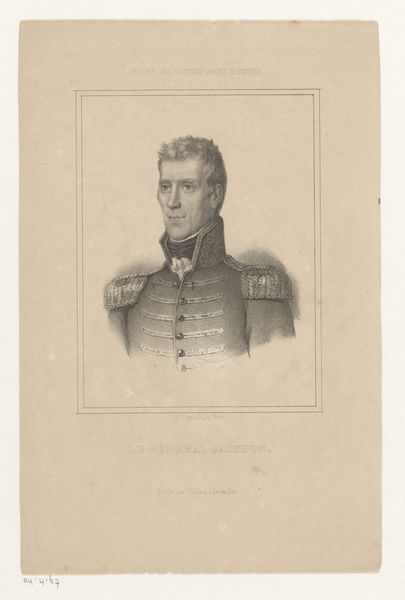
print, engraving
#
neoclacissism
# print
#
19th century
#
history-painting
#
engraving
Dimensions: height 281 mm, width 191 mm
Copyright: Rijks Museum: Open Domain
Curator: Here we have "Portret van Benoît de Boigne," an engraving from 1822 by Ambroise Tardieu. It depicts Benoît de Boigne, a French military adventurer. It strikes me as a highly composed, classically-structured image. Editor: My first thought is, what a meticulous print. You can really see the labor, the delicate etching of the lines giving such detail to his clothing and face. There's an almost obsessive level of ornamentation in his garments. Curator: Absolutely, and that ornamentation signals something crucial about the man himself. Note the precision in the rendering of his military attire. It speaks volumes about his status, but also the idealized vision of hierarchy and order so prized during the Neoclassical era. The use of line, particularly in the face, serves to communicate resolve and reason. Editor: I agree that the military dress and ornamentation broadcast privilege. Considering the work through a material lens, I wonder about the role clothing played in shaping his identity, and how it projects that power dynamic to its viewers, through something like a print which might be reproduced and consumed by wider audiences. Curator: An astute point. Further analysis of the engraving's design shows how Tardieu used oval form and framing to give us this intimate portrait, celebrating the sitter. De Boigne isn’t simply a soldier; the composition presents him as a man of civic virtue. Look at the softness given through tonal modeling, a touch of Romanticism perhaps, playing into an individual, heroic narrative. Editor: That's undeniable, especially knowing more of the history. A materialist might note that his heroic persona was very consciously constructed and required not only talent in battle but considerable funds to realize and circulate such imagery! What we witness isn’t just genius—it’s skillful management of labor, materials and power for specific outcomes. Curator: Yes, seeing that convergence creates richer perspective on both its context and design, don't you think? Editor: Indeed. By investigating these different readings, one may appreciate a more complete view of art's production and historical reflection.
Comments
No comments
Be the first to comment and join the conversation on the ultimate creative platform.
